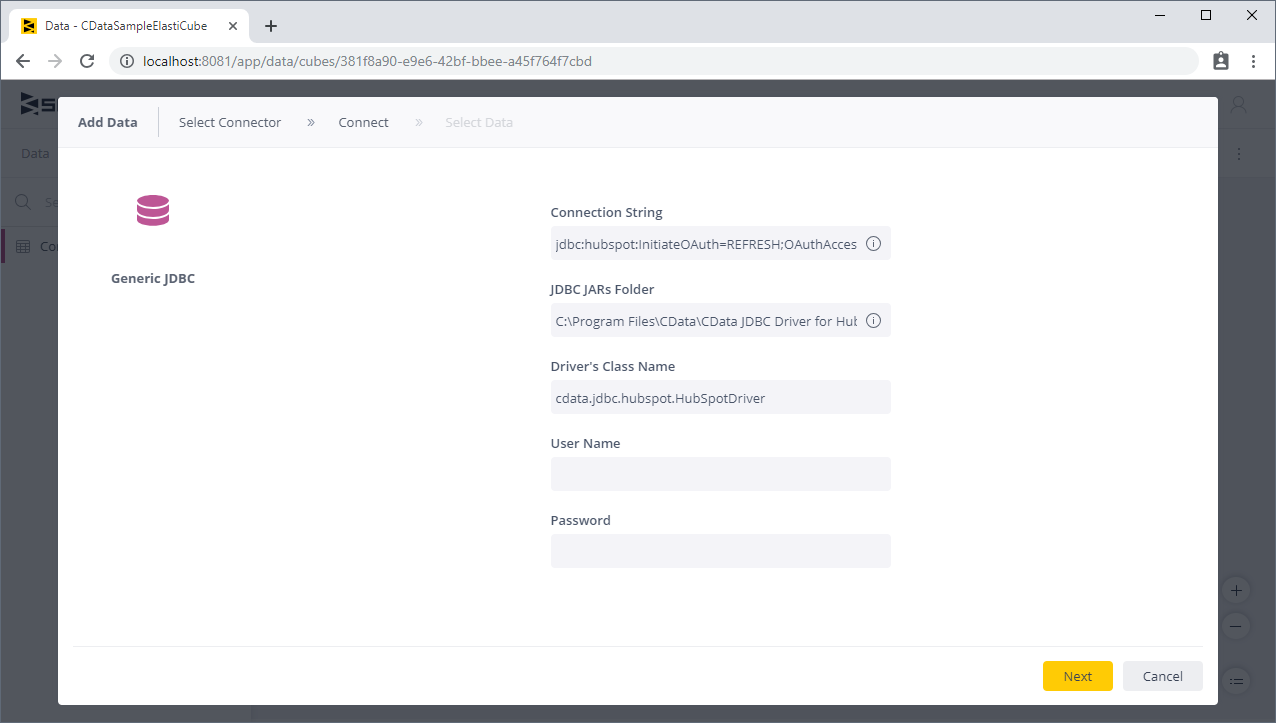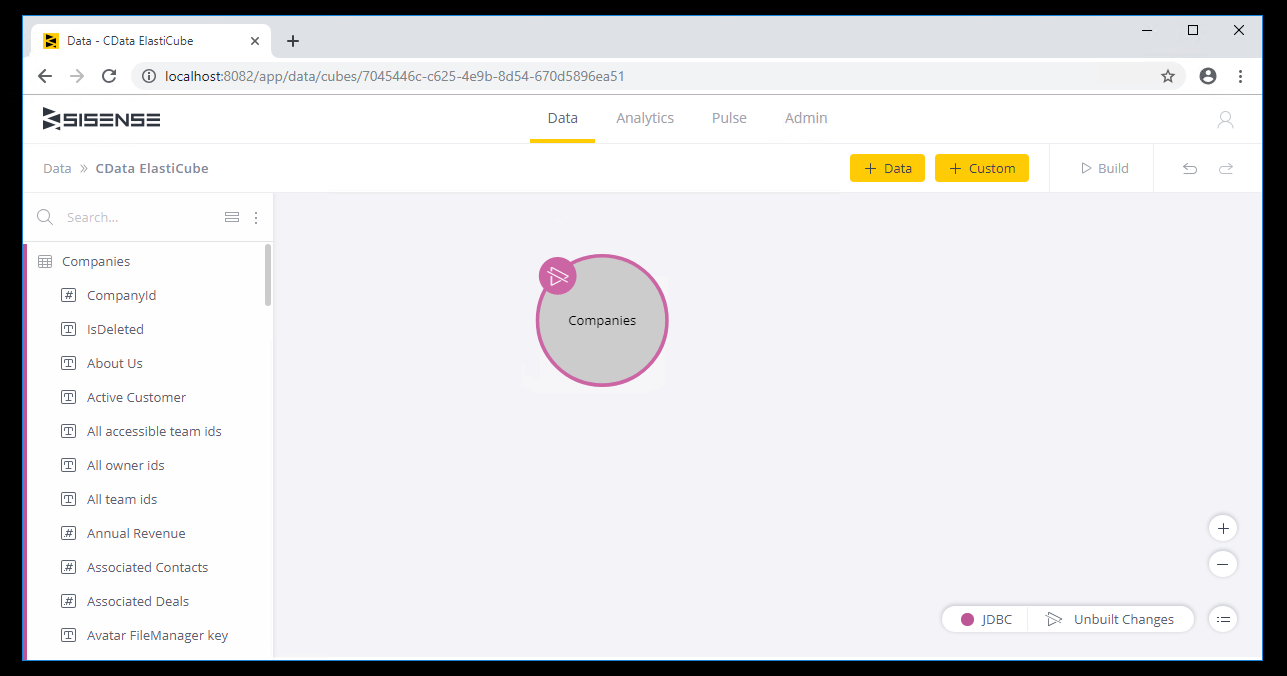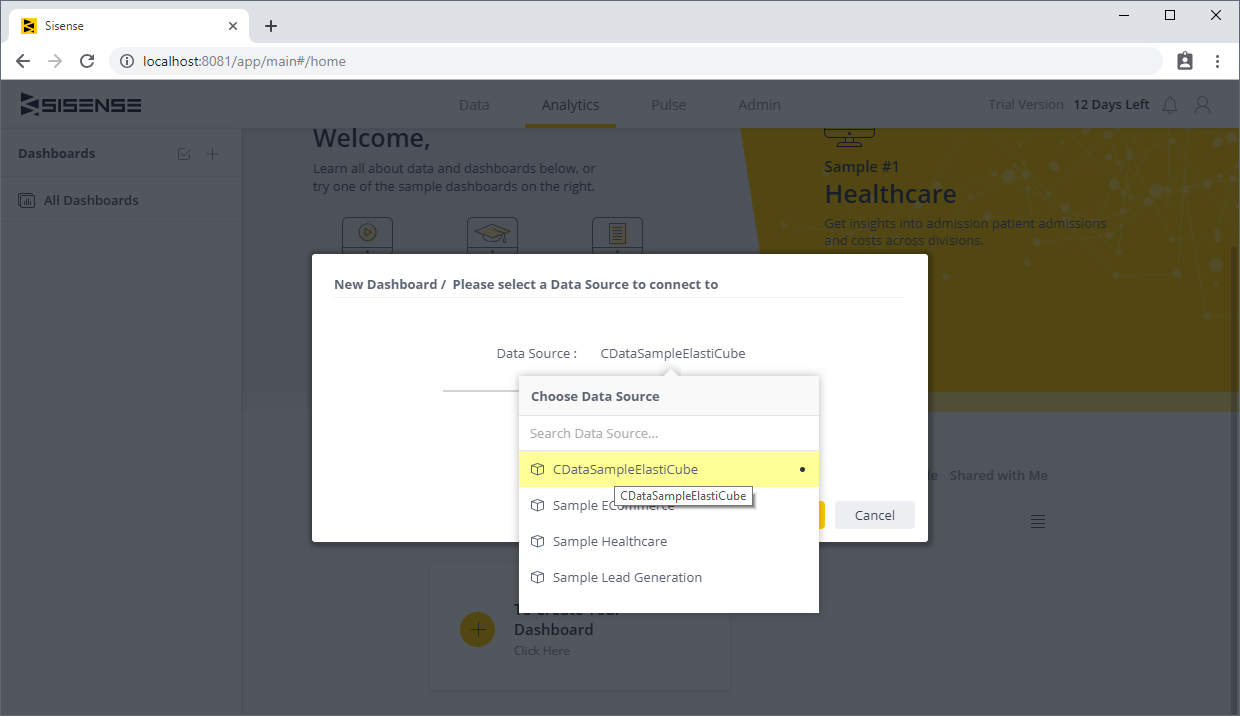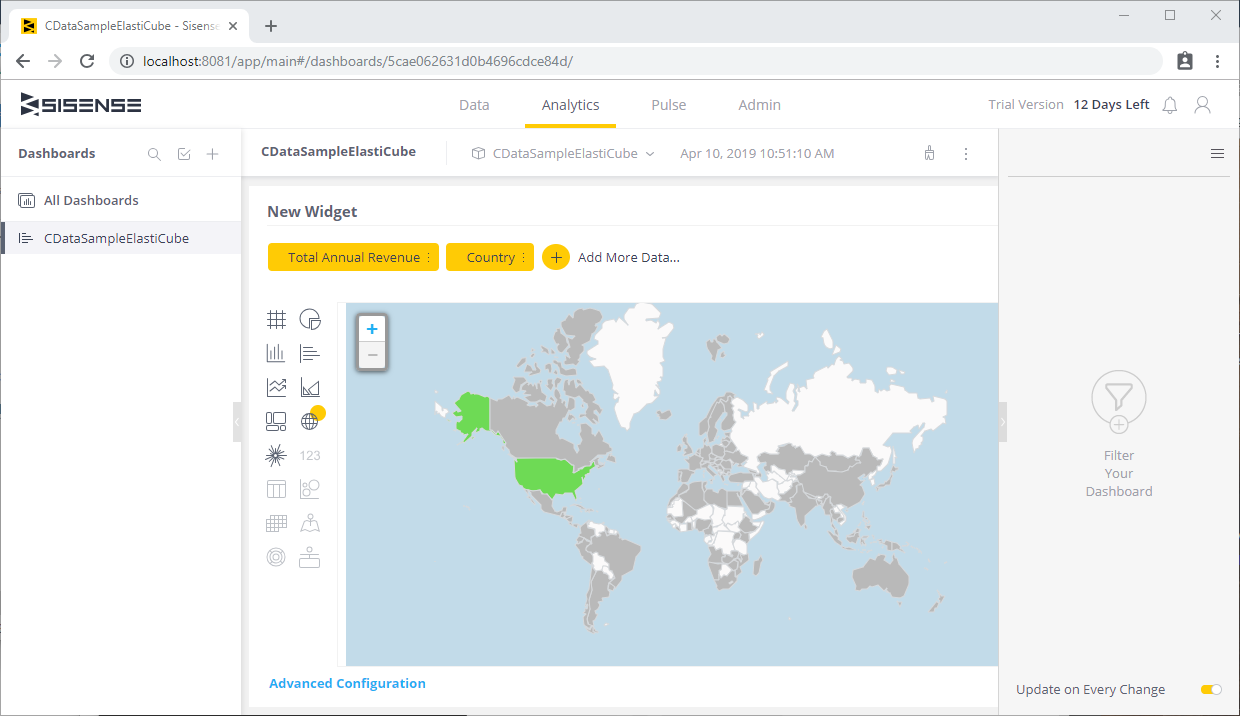Discover how a bimodal integration strategy can address the major data management challenges facing your organization today.
Get the Report →Visualize Okta Data in Sisense
Create an ElastiCube in Sisense app with access to Okta data.
Sisense lets you join, analyze, and picture data to make more intelligent business decisions and craft effective strategies. The CData JDBC Driver for Okta makes it easy to integrate with Okta data in Sisense. This article shows how to create an ElastiCube that connects to Okta data and use the ElastiCube to visualize Okta data in Sisense.
Configure the Connection to Okta
Before creating the ElastiCube, note the installation location for the JAR file for the JDBC Driver (typically C:\Program Files\CData\CData JDBC Driver for Okta 20XX\lib) or copy the jar file (cdata.jdbc.okta.Okta.jar) to a new folder in the Sisense JDBC driver directory (typically C:\ProgramData\Sisense\DataConnectors\jdbcdrivers).
- In the Data page of the Sisense application, create a new ElastiCube (or open an existing one).
- In the Model Editor, click "+ Data" to open the Add Data dialog box.
- Click Generic JDBC to open the JDBC settings.
![Connecting via JDBC]()
- Set the connection string property to the JDBC URL for Okta, adding required properties.
To connect to Okta, set the Domain connection string property to your Okta domain.
You will use OAuth to authenticate with Okta, so you need to create a custom OAuth application.
Creating a Custom OAuth Application
From your Okta account:
- Sign in to your Okta developer edition organization with your administrator account.
- In the Admin Console, go to Applications > Applications.
- Click Create App Integration.
- For the Sign-in method, select OIDC - OpenID Connect.
- For Application type, choose Web Application.
- Enter a name for your custom application.
- Set the Grant Type to Authorization Code. If you want the token to be automatically refreshed, also check Refresh Token.
- Set the callback URL:
- For desktop applications and headless machines, use http://localhost:33333 or another port number of your choice. The URI you set here becomes the CallbackURL property.
- For web applications, set the callback URL to a trusted redirect URL. This URL is the web location the user returns to with the token that verifies that your application has been granted access.
- In the Assignments section, either select Limit access to selected groups and add a group, or skip group assignment for now.
- Save the OAuth application.
- The application's Client Id and Client Secret are displayed on the application's General tab. Record these for future use. You will use the Client Id to set the OAuthClientId and the Client Secret to set the OAuthClientSecret.
- Check the Assignments tab to confirm that all users who must access the application are assigned to the application.
- On the Okta API Scopes tab, select the scopes you wish to grant to the OAuth application. These scopes determine the data that the app has permission to read, so a scope for a particular view must be granted for the driver to have permission to query that view. To confirm the scopes required for each view, see the view-specific pages in Data Model < Views in the Help documentation.
Built-in Connection String Designer
For assistance in constructing the JDBC URL, use the connection string designer built into the Okta JDBC Driver. Either double-click the JAR file or execute the jar file from the command-line.
java -jar cdata.jdbc.okta.jarFill in the connection properties and copy the connection string to the clipboard.
![Using the built-in connection string designer to generate a JDBC URL (Salesforce is shown.)]()
When you configure the JDBC URL, you may also want to set the Max Rows connection property. This will limit the number of rows returned, which is especially helpful for improving performance when designing reports and visualizations.
A typical example follows:
jdbc:okta:Domain=dev-44876464.okta.com;InitiateOAuth=REFRESH - Set the JDBC JARs folder property to the location of the CData JDBC Driver JAR file (see above).
- Set the driver's class name to the class name for the JDBC Driver: cdata.jdbc.okta.OktaDriver
- Leave the username and password properties blank.
- Click Next.
![A configured connection in Sisense (HubSpot is shown).]()
Add Okta Data to an ElastiCube
Once you are connected to Okta, you can add views to your ElastiCubes.
- From the Tables list, select the tables and/or views you wish to work with.
- (Optional) Click "+" to customize the data you want to import with SQL.
- Click Done.
![Selected tables to add to the ElastiCube]()
- Click Build to build the ElastiCube for analytics.
Visualize Okta Data
With Okta tables added to your ElastiCube, you can perform analytics on your Okta data.
- Navigate to the Analytics page of the Sisense application
- Select a Dashboard (or create a new one)
- Select your Data Source and click Create
![Selecting the newly created ElastiCube]()
- Click "+ Select Data" and choose fields to add to your visualization.
![Visualizing data in Sisense (HubSpot is shown).]()
With the CData JDBC Driver for Okta, you can access Okta data right in Sisense for powerful visualization and analytics. Download a free, 30-day trial and start working with Okta data in Sisense today!











